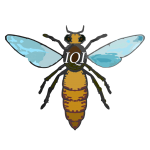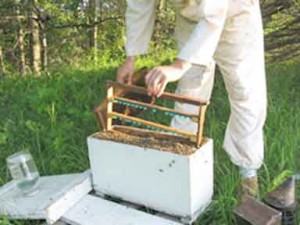
The Doolittle Method
G. M. Doolittle’s major contribution to queen rearing is the technique known as grafting. Appropriately aged larvae from a selected queen are removed with a grafting tool, placed into queen cell cups on a cell bar frame, and given to queenless bees containing abundant nurse bees and an??excess of food stores. Queenless bees do a better job of starting queen cells which are then moved to a queenright colony over an excluder as queenright colonies tend to give better care to the cells in the later days of ??developement. Cells are distributed to mating boxes,??nucs, queenless colonies, etc. 10 days from the day of the graft.
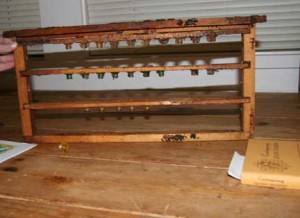
The Jenter Method
Jenter and similar systems are basically grafting without actually making the graft. The kits cost around $100 and are an alternative for those having problems with grafting.
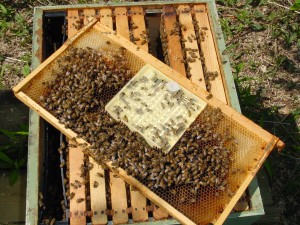
The Hopkins Method
Hopkins would take frames of appropriately aged larvae and turn them sideways above the broodnest. He says that numerous quality cells could be generated in this manner. “This method (The Hopkins Method of Queen Rearing) is as good as and probably better for us than when first introduced 80+ years ago.”-G.W. Hayes, April, 1991.
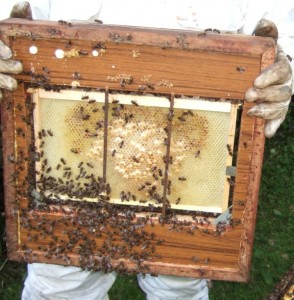
The Miller Method
C.C. Miller placed cut strips of wireless medium brood foundation in the broodnest of selected breeder queens. After4-6 days he would cut off any eggs, destroy 2-3 larvae above and around the chosen larvae, and let the bees generate queen cells on the comb.??This?? is an example of drawn foundation strips with eggs and just hatched larvae to be used in the Miller Method.
The Alley Method
Alley cut strips of appropiately aged larvae and them fastened them facing downwards into cut out spaces in the comb. These strips can also be fastened to a cell bar frame. Destroying 3 larvae between selected larvae allows room for easy removal upon maturity. As can be seen from the picture??below, several of these methods can be easily used by the smaller beekeeper desiring only a few cells.

Although a search of the web will yeild many sources of info on queen rearing; Michael Bush has one of the best with excerpts from the original writings of Doolittle, Miller, Alley, and others. Here is the link to his site:

